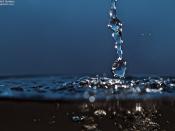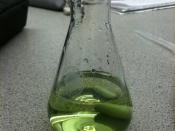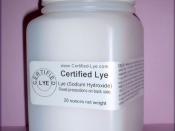Introduction.
The following is an experiment into temperature change in an exothermic reaction taking place between Sodium hydroxide (NaOH) and Hydrochloric acid (HCl) and also how the concentration of the acid will vary these results. The characteristics of the reaction feature a neutralisation, an energy change (shown as a temperature change) that is usually exothermic (gives out heat).
The reaction of neutralisation is exothermic because of the bonds being broken and made in the reaction. When bonds are broken, energy in those bonds are taken in, and in this case, are noted as a temperature change, the temperature increasing. If it were an endothermic reaction, the temperature would lower, because the reaction is using up more energy breaking the bonds, this is noted and a temperature change, this time, showing how temperature decreases.
The acid and alkali compounds dissolve into water, acid into hydrogen ions, and alkali in hydroxide ions.
Neutralisation with hydrogen and a hydroxide, at the end, the product is water (also with left over sodium chloride). There is energy released in kilojoules when a reaction takes place.
The main aim is testing the effect of different concentrations and the effect it has on temperature.
Variables.
To make this test fair, we must only change one variable, that being the concentration of the hydrochloric acid, but we must also make sure, that the alkali concentration is constant. Also, for the sake of fair testing, the room temperature must stay the same, as is will vary results greatly on day to the next.
Trial run.
The trail run was to determine a number of details; The first, being the correct ratio of concentration, what I mean to say is, how many cubic centimetres the solution of acid and water will vary each time we do the experiment.



Tabs in Formatting.
I can't read that table to see if your results make any sense.
0 out of 0 people found this comment useful.